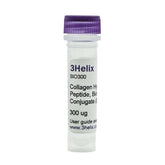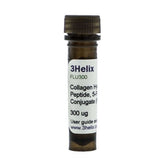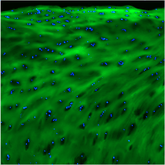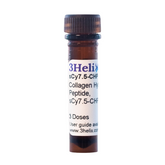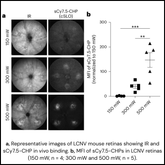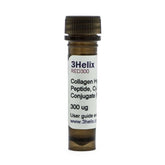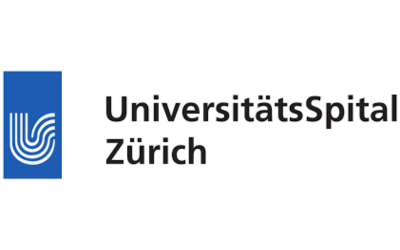What can Collagen Hybridizing Peptides tell us about Chemical Warfare?
When talking about national security, collagen is not typically a topic of conversation. However, a fascinating article published in The Ocular Surface this year shows the necessity of understanding how mustard gas damages collagen. Sulfur Mustard (Mustard Gas, SM) is a potent, extensively used biological weapon that presents a threat to military personnel even today due to its ability to rapidly penetrate biological tissues - especially in the eye. Even brief eye exposure to SM leads to irritation, apoptosis, and severe inflammation; resulting in tissue damage and permanent vision impairment. To better understand SM’s pathophysiology and develop potential treatments for SM exposure, researchers are developing better models. In this effort, researchers are using Collagen Hybridizing Peptides (CHPs) to selectively visualize SM-induced collagen damage in ocular tissue.
Researchers first validated three strains of transgenic mice that mimic ocular mechanisms in SM-exposed humans. This included a K-15 strain to determine whether stem cell regeneration is occurring, a Ve-Cad strain to label blood vessels and cells infiltrating the cornea, and a THy-1 strain to provide insights into the rate and extent of mid-stromal nerve fiber (MSNF) dynamics.
Mice were then exposed to SM for different times to better understand SM pathophysiology. While 35 seconds of exposure lead to transient inflammatory cell infiltration, no MSNF insult, and a gradual, transient SC insult which recovered after 4 weeks, the result of a longer exposure was more severe. After 120 seconds, there was significant and persistent inflammatory cell infiltration, MSNF insult that did not heal even after 8 weeks, and irreversible impairment of stem cell regeneration.
Continue Reading
The stark difference in outcomes raises a critical question: what is the underlying reason for this permanent damage? Researchers hypothesized the irreversible effects were rooted in a fundamental breakdown of the cornea's structural integrity: specifically, the collagen that forms its scaffold.
To test this, they used Collagen Hybridizing Peptides (CHPs), which uniquely bind to and illuminate damaged collagen strands. The team performed histological analysis on the corneas of Ve-Cad mice eight weeks after a 120-second SM exposure. The results were clear: while unexposed corneas showed only weak CHP signal, indicating healthy, intact collagen, the SM-exposed eyes fluoresced brightly, revealing extensive, denatured stromal collagen.

This finding was the missing link. The severe collagen damage directly correlated with the other pathological signs observed in the tissue, including chronic inflammatory cell infiltration, an irregular epithelial layer, and the formation of new blood vessels (neovascularization). For the first time, researchers could visually confirm that the functional decline of the tissue was underpinned by catastrophic damage to its molecular architecture.
This study moves beyond just establishing a robust murine model for ocular injury; it decisively demonstrates the power of CHPs to provide the definitive link between a molecular event (matrix destruction) and its resulting functional pathology.
While this work used CHPs for histological analysis, the clear path forward involves our sCy7.5-conjugated CHP for longitudinal in vivo imaging. This capability could transform how researchers track disease progression, and, critically, screen the efficacy of novel therapeutics in real-time. The principle of directly quantifying structural damage to explain functional outcomes is a powerful approach applicable across numerous research fields.
Unlocking complex pathologies is the first step in developing effective countermeasures. Discover how CHP technology can provide a clear, quantifiable readout of collagen damage and accelerate insights from your research.
FULL PAPER: Gore, A. et al. "Use of a transgenic mouse model for in vivo monitoring of corneal pathologies following Sulfur Mustard Exposure" The Ocular SurfaceVolume 37, July 2025, Pages 247-259
